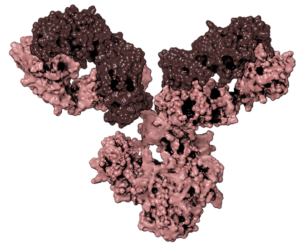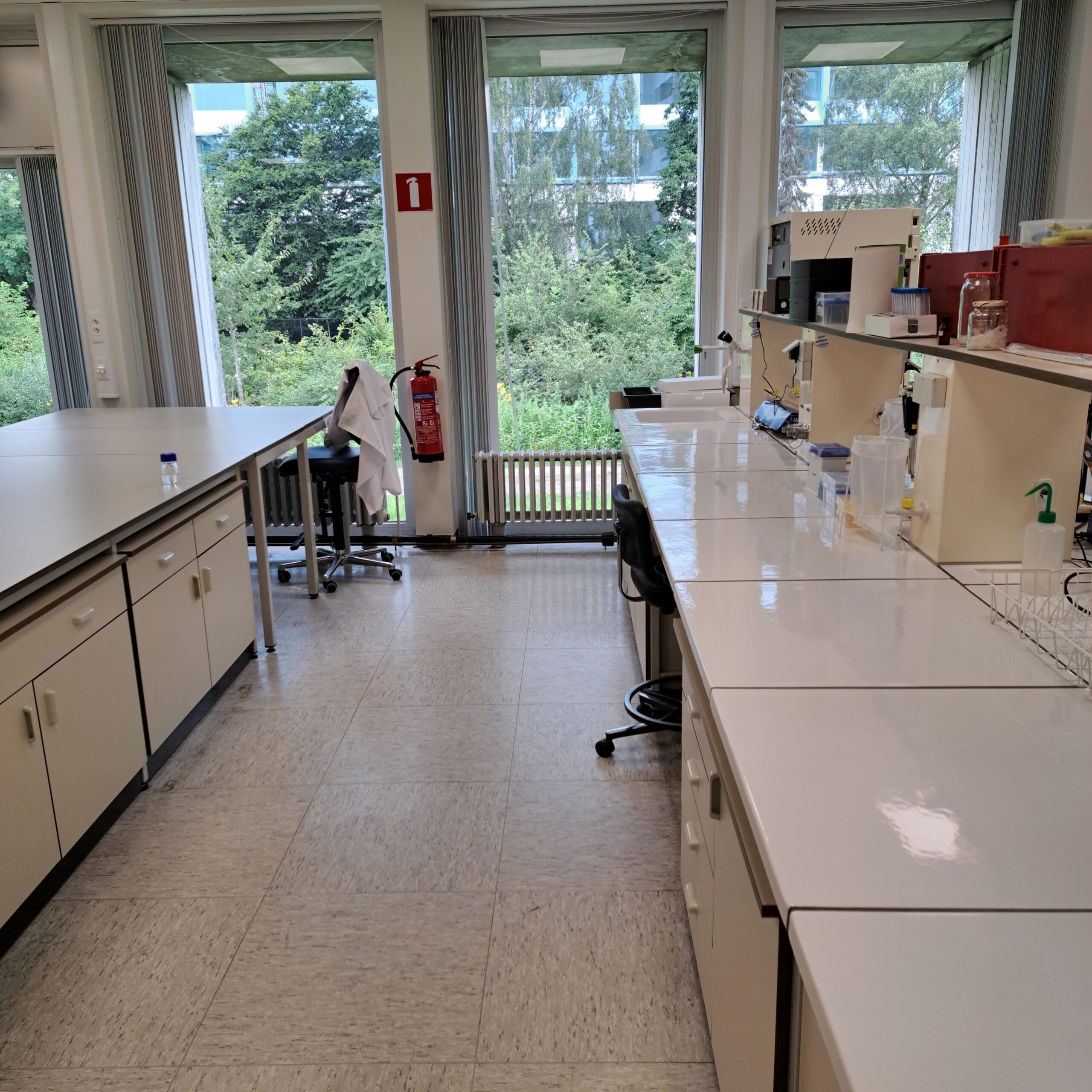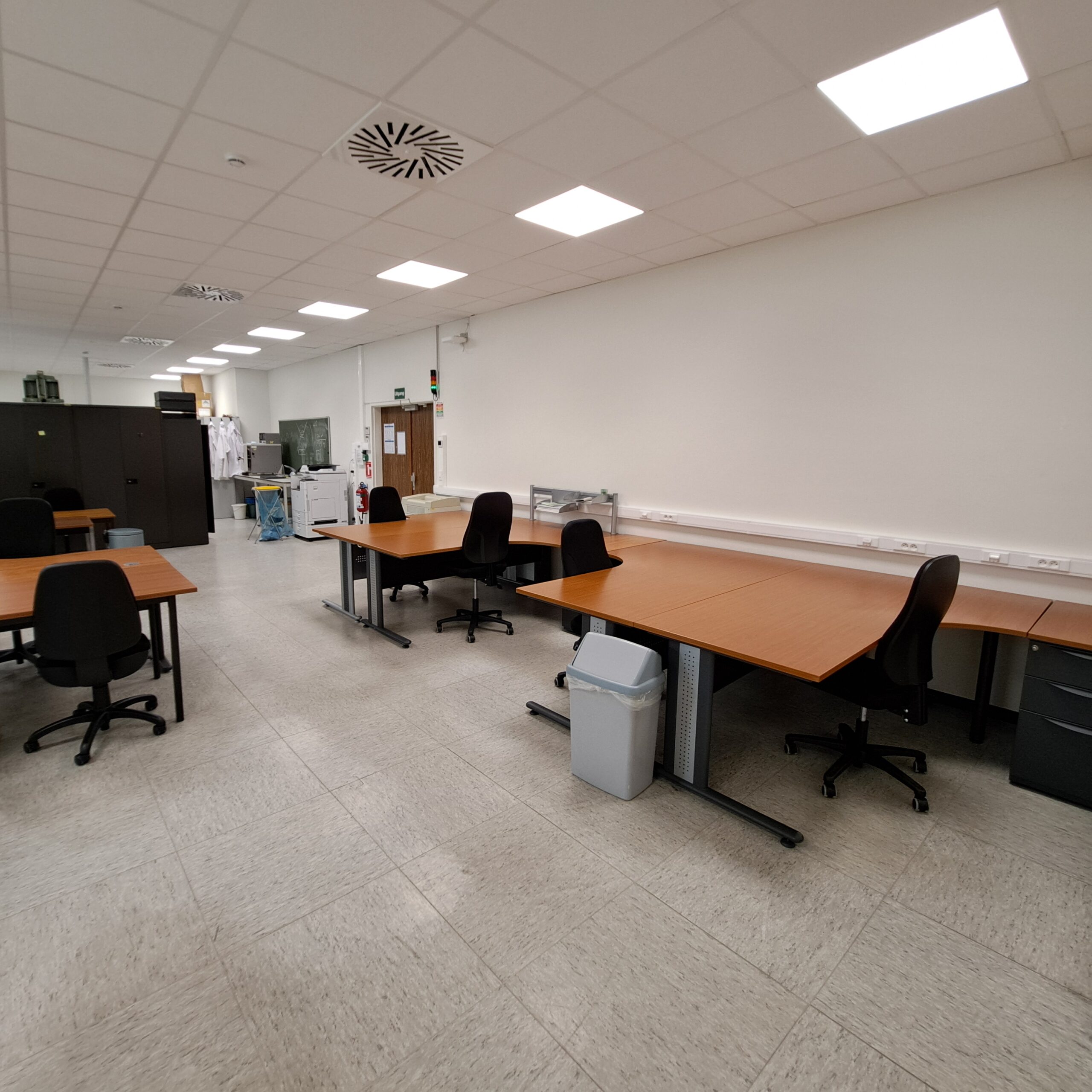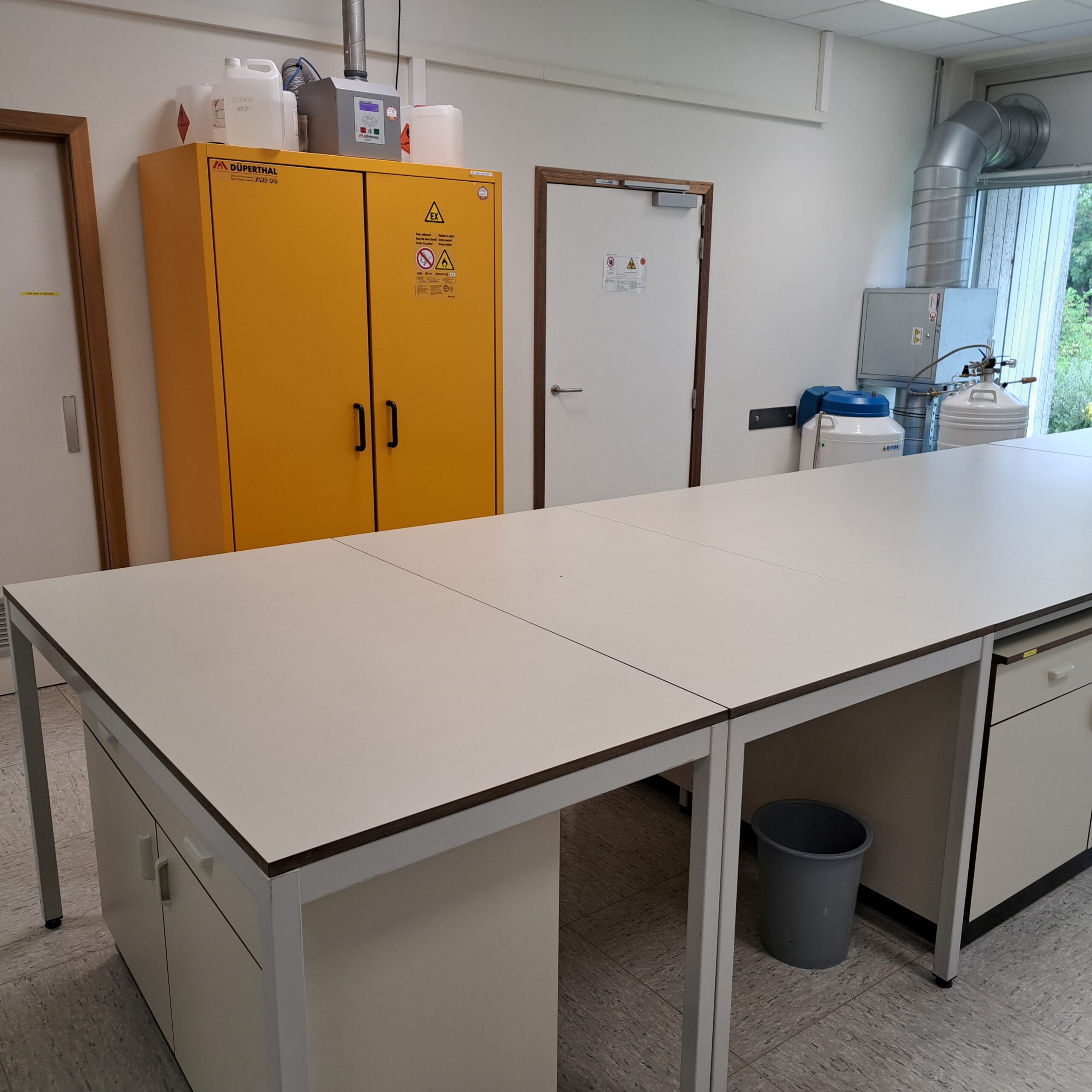ProGenTomics offers a wide range of mass spectrometry based proteomics services for both the academic community and industry. We aim to tailor our services and the experimental design to the needs of the project thus ensuring solid data and results. This includes sample preparation, method development, sample acquisition, data-analysis and detailed reporting.









What can ProGenTomics do for you?

Differential Protein Analysis
Biotherapeutic Characterization
Histone epigenetics
Timelapse Protein Analysis
Forensic- & Palaeoproteomics
Plasma Proteomics
Want to be more closely involved?
Do not hesitate to contact us if you want to be more closely involved with the analytical side of things and/or if you are looking for some additional lab (and desk) space in Ghent. We have all common laboratory equipment readily available and enough bench space for your specialised instrumentation. Get the most out of our proteomics expertise and join us on site!
Past projects
- Integrative Proteomic Profiling Reveals PRC2-Dependent epigenetic Crosstalk Maintains Ground-State Pluripotency
By: Guido van Mierlo, René A.M. Dirks, Laura De Clerck, Arie B. Brinkman, Michelle Huth, Susan L. Kloet, Nehmé Saksouk, Leonie I. Kroeze, Sander Willems, Matthias Farlik, Christoph Bock, Joop H. Jansen, Dieter Deforce, Michiel Vermeulen, Jérôme Déjardin, Maarten Dhaenens, Hendrik Marks
https://doi.org/10.1016/j.stem.2018.10.017
The pluripotent ground state is defined as a basal state free of epigenetic restrictions, which influence lineage specification. While naive embryonic stem cells (ESCs) can be maintained in a hypomethylated state with open chromatin when grown using two small-molecule inhibitors (2i)/leukemia inhibitory factor (LIF), in contrast to serum/LIF-grown ESCs that resemble early post-implantation embryos, broader features of the ground-state pluripotent epigenome are not well understood. We identified epigenetic features of mouse ESCs cultured using 2i/LIF or serum/LIF by proteomic profiling of chromatin-associated complexes and histone modifications. Polycomb-repressive complex 2 (PRC2) and its product H3K27me3 are highly abundant in 2i/LIF ESCs, and H3K27me3 is distributed genome-wide in a CpG-dependent fashion. Consistently, PRC2-deficient ESCs showed increased DNA methylation at sites normally occupied by H3K27me3 and increased H4 acetylation. Inhibiting DNA methylation in PRC2-deficient ESCs did not affect their viability or transcriptome. Our findings suggest a unique H3K27me3 configuration protects naive ESCs from lineage priming, and they reveal widespread epigenetic crosstalk in ground-state pluripotency. Integrated multi-omics reveal polycomb repressive complex 2 restricts human trophoblast induction
By: Dick W. Zijlmans, Irene Talon, Sigrid Verhelst, Adam Bendall, Karlien Van Nerum, Alok Javali, Andrew A. Malcolm, Sam S. F. A. van Knippenberg, Laura Biggins, San Kit To, Adrian Janiszewski, Danielle Admiraal, Ruth Knops, Nikky Corthout, Bradley P. Balaton, Grigorios Georgolopoulos, Amitesh Panda, Natarajan V. Bhanu, Amanda J. Collier, Charlene Fabian, Ryan N. Allsop, Joel Chappell, Thi Xuan Ai Pham, Michael Oberhuemer, Cankat Ertekin, Lotte Vanheer, Paraskevi Athanasouli, Frederic Lluis, Dieter Deforce, Joop H. Jansen, Benjamin A. Garcia, Michiel Vermeulen, Nicolas Rivron, Maarten Dhaenens, Hendrik Marks, Peter J. Rugg-Gunn and Vincent Pasque
https://doi.org/10.1038/s41556-022-00932-w
Human naive pluripotent stem cells have unrestricted lineage potential. Underpinning this property, naive cells are thought to lack chromatin-based lineage barriers. However, this assumption has not been tested. Here we define the chromatin-associated proteome, histone post-translational modifications and transcriptome of human naive and primed pluripotent stem cells. Our integrated analysis reveals differences in the relative abundance and activities of distinct chromatin modules. We identify a strong enrichment of polycomb repressive complex 2 (PRC2)-associated H3K27me3 in the chromatin of naive pluripotent stem cells and H3K27me3 enrichment at promoters of lineage-determining genes, including trophoblast regulators. PRC2 activity acts as a chromatin barrier restricting the differentiation of naive cells towards the trophoblast lineage, whereas inhibition of PRC2 promotes trophoblast-fate induction and cavity formation in human blastoids. Together, our results establish that human naive pluripotent stem cells are not epigenetically unrestricted, but instead possess chromatin mechanisms that oppose the induction of alternative cell fates.
In forensic casework analysis, identification of the biological matrix and the species of a forensic trace, preferably without loss of DNA, is of major importance. The biological matrices that can be encountered in a forensic context are blood (human or non-human), saliva, semen, vaginal fluid, and to a lesser extent nasal secretions, feces, and urine. All these matrices were applied on swabs and digested with trypsin in order to obtain peptides. These peptides were injected on a mass spectrometer (ESI Q-TOF) resulting in the detection of several biomarkers that were used to build a decision tree for matrix identification. Additionally, by means of this proteomic approach, species identification was possible. This approach has the advantage that the analysis is performed on the first “washing” step of the chelex DNA extraction, a solution which is normally discarded, and that one single test is sufficient to determine the identity and the species of the biological matrix, while the conventional methods require cascade testing.
Mass spectrometry-based proteomics as a tool to identify biological matrices in forensic science
By: Van Steendam K, De Ceuleneer M, Dhaenens M, Van Hoofstat D, Deforce D.
INTERNATIONAL JOURNAL OF LEGAL MEDICINE, 127(2): 287-298, MAR 2013, DOI: 10.1007/s00414-012-0747-x
The design of engineered gold nanoparticles that can interact with living cells and tissues is important for many biomedical applications, including imaging, diagnostics, and drug delivery. Polymer-decoration of goldNP is attractive to modulate the goldNP properties and to render them colloidally stable in complex media. Also proteins can show different binding properties according to the polymer that is attached to the goldNP. To further investigate this, HEA x MEA y @goldNP were exposed to Foetal bovine serum. Subsequently, the particels were loaded on polyacrylamide gel (PAGE) and subjected to electrophoresis followed by in-gel digestion with trypsin. The bound proteins were identified by means of LC-MS/MS. Additionally, the hydrophobicity of the absorbed proteins was analysed by means of the GRAVY score.
Prenylated chalcone xanthohumol associates with histones in breast cancer cells–a novel target identified by a monoclonal antibody
By: Wyns C, van Steendam K, Vanhoecke B, Deforce D, Bracke M, Heyerick A.
MOLECULAR NUTRITION & FOOD RESEARCH, 56(11): 1688-1696, NOV 2012, DOI: 10.1002/mnfr.201200030
In order to identify the antigens in immune complexes in synovial fluid from patients with rheumatoid arthritis, the immune complexes were first isolated by means of protA and G columns. The eluted fraction was separated by means of two dimensional gel-electrophoresis and immunodetection on nitrocellulose membranes revealed the presence of vimentin and fibrinogen. In addition, by means of Western blotting, citrullination of vimentin was found as a characteristic post-translational modification.
Citrullinated vimentin as an important antigen in immune complexes from synovial fluid of rheumatoid arthritis patients with antibodies against citrullinated proteins
By: Van Steendam K, Tilleman K, De Ceuleneer M, De Keyser F, Elewaut D, Deforce D.
ARTHRITIS RESEARCH & THERAPY, 12(4): R132, 2010, DOI: 10.1186/ar3070
The design of engineered gold nanoparticles that can interact with living cells and tissues is important for many biomedical applications, including imaging, diagnostics, and drug delivery. Polymer-decoration of goldNP is attractive to modulate the goldNP properties and to render them colloidally stable in complex media. Also proteins can show different binding properties according to the polymer that is attached to the goldNP. To further investigate this, HEA x MEA y @goldNP were exposed to Foetal bovine serum. Subsequently, the particels were loaded on polyacrylamide gel (PAGE) and subjected to electrophoresis followed by in-gel digestion with trypsin. The bound proteins were identified by means of LC-MS/MS. Additionally, the hydrophobicity of the absorbed proteins was analysed by means of the GRAVY score.
Tailoring Cellular Uptake of Gold Nanoparticles Via the Hydrophilic-to-Hydrophobic Ratio of their (Co)polymer Coating
By: Zhang, Zhiyue; Van Steendam, Katleen; Maji, Samarendra; et al.
ADVANCED FUNCTIONAL MATERIALS, 25(22): 3433-3439, JUN 2015, DOI: 10.1002/adfm.201500904
Cell lysate from Devriesea agamarum was separated on two dimensional (2D) gel-electrophoresis and stained with Sypro Ruby. In parallel a 2D Western blot was prepared. Immunodetection with serum antibodies and their corresponding secundary and tertiary antibody revealed several immunoreactive spots on Western blot. These spots were excised from the gel and identified by means of mass spectrometry. Aminoacid sequences were matched by Mascot Daemon using the in-house sequenced genome from Devriesea agamarum.
Autovaccination confers protection against Devriesea agamarum associated septicemia but not dermatitis in bearded dragons (Pogona vitticeps)
By: Hellebuyck, T; Van Steendam, K; Deforce, D; Blooi, M; Van Nieuwerburgh, F; Bullaert, E; Ducatelle, R; Haesebrouck, F; Pasmans, F; Martel, A.
PLoS One, 9(12): e113084, DEC 2014, DOI: 10.1371/journal.pone.0113084


